As the electric vehicle market continues to grow, the competition among automotive giants becomes fiercer. Two names that consistently capture attention are Mercedes-Benz and Tesla, both of which have introduced impressive entries in the electric SUV segment: the Mercedes EQB and the Tesla Model Y. In this article, we will dive into a detailed comparison of these two innovative vehicles, highlighting their technical aspects, performance metrics, and groundbreaking features.
Mercedes EQB vs Tesla Model Y – Which car suits you better?
Compare performance, boot capacity, efficiency and price at a glance.
Find out which car is the better choice for you – Mercedes EQB or Tesla Model Y?
Design and Dimensions
The Mercedes EQB is a sleek and modern SUV, measuring 4684 mm in length, 1834 mm in width, and standing 1654 mm tall. It boasts a practical design with five doors and an impressive trunk capacity of 495 liters.
On the other hand, the Tesla Model Y is slightly larger, with dimensions of 4751 mm in length and 1921 mm in width, alongside a height of 1624 mm. The Model Y offers versatility with its five-door configuration and a massive trunk capacity of 854 liters, making it a perfect choice for families or those needing extra cargo space.
Powertrain and Performance
Both vehicles feature electric powertrains, but they offer different power configurations. The EQB provides a choice between front-wheel drive and all-wheel drive, delivering power outputs of 190 HP to a robust 292 HP. It accelerates from 0 to 100 km/h in just 6.2 seconds for its top variant, showcasing respectable performance.
The Tesla Model Y, however, raises the bar with its more potent options, ranging from 299 HP to an astonishing 534 HP. Its acceleration is particularly impressive, achieving 0 to 100 km/h in just 3.7 seconds for performance variants. This exhilarating performance makes the Model Y a standout in the electric SUV category.
Efficiency and Range
Efficiency is key when comparing electric vehicles. The EQB offers consumption rates that vary between 15.2 kWh/100 km to 17.3 kWh/100 km. It has a maximum electric range of 533 km, with battery capacities up to 70.5 kWh, ensuring it can comfortably handle long trips.
In contrast, the Tesla Model Y showcases its efficiency with a consumption range from 14.9 kWh/100 km to 17.3 kWh/100 km. The Model Y's electric range is an impressive selling point, boasting a maximum of 600 km on select models. This extensive range, coupled with battery capacity options up to 79 kWh, reinforces Tesla's reputation for long-distance electric travel capabilities.
Interior and Technology
When it comes to the interiors, both SUVs embrace modern design and advanced technology. The EQB provides a luxurious feel with high-quality materials and a well-organized infotainment system. It comfortably seats up to five people and includes plenty of cargo space for everyday needs.
The Tesla Model Y, on the other hand, takes a minimalist approach with its design, focusing heavily on its large touchscreen interface that controls nearly all vehicle functions. It also has an option to expand seating to seven, accommodating larger families or groups. Its innovative features, including Autopilot and over-the-air software updates, ensure that the Model Y remains on the cutting edge of electric vehicle technology.
Conclusion
Choosing between the Mercedes EQB and the Tesla Model Y ultimately boils down to personal preference and priorities. If you prioritize luxury, refined design, and comfortable daily usability, the EQB is an excellent choice. However, if you seek exhilarating performance, superior range, and cutting-edge technology, the Model Y is hard to beat. Both vehicles represent significant advancements in electric mobility and reflect their manufacturers' commitment to sustainability and innovation in the automotive world.
Here’s where it gets real: The technical differences in detail
Costs and Efficiency:
Looking at overall running costs, both models reveal some interesting differences in everyday economy.
Tesla Model Y has a clearly perceptible advantage in terms of price – it starts at 34300 £, while the Mercedes EQB costs 45900 £. That’s a price difference of around 11592 £.
In terms of energy consumption, the advantage goes to the Tesla Model Y: with 13.10 kWh per 100 km, it’s a bit more efficient than the Mercedes EQB with 15.20 kWh. That’s a difference of about 2.10 kWh.
As for range, the Tesla Model Y performs a bit better – achieving up to 622 km, about 87 km more than the Mercedes EQB.
Engine and Performance:
Under the bonnet, it becomes clear which model is tuned for sportiness and which one takes the lead when you hit the accelerator.
When it comes to engine power, the Tesla Model Y has a convincingly edge – offering 627 HP compared to 292 HP. That’s roughly 335 HP more horsepower.
In acceleration from 0 to 100 km/h, the Tesla Model Y is convincingly quicker – completing the sprint in 3.50 s, while the Mercedes EQB takes 6.20 s. That’s about 2.70 s faster.
In terms of top speed, the Tesla Model Y performs clearly perceptible better – reaching 250 km/h, while the Mercedes EQB tops out at 160 km/h. The difference is around 90 km/h.
There’s also a difference in torque: Mercedes EQB pulls slight stronger with 520 Nm compared to 493 Nm. That’s about 27 Nm difference.
Space and Everyday Use:
Cabin size, boot volume and payload all play a role in everyday practicality. Here, comfort and flexibility make the difference.
Both vehicles offer seating for 5 people.
In curb weight, Tesla Model Y is hardly perceptible lighter – 1976 kg compared to 2105 kg. The difference is around 129 kg.
In terms of boot space, the Tesla Model Y offers evident more room – 822 L compared to 495 L. That’s a difference of about 327 L.
In maximum load capacity, the Tesla Model Y performs clearly perceptible better – up to 2138 L, which is about 428 L more than the Mercedes EQB.
When it comes to payload, Tesla Model Y minimal takes the win – 472 kg compared to 435 kg. That’s a difference of about 37 kg.
Who wins the race?
The Tesla Model Y proves to be leaves the rival little chance and therefore becomes our DriveDuel Champion!
Tesla Model Y is the better all-rounder in this comparison.
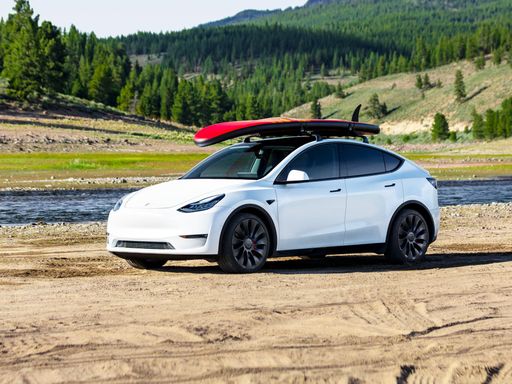 @ Tesla, Inc.
@ Tesla, Inc.
Tesla Model Y
Mercedes EQB
The Mercedes EQB is an electric compact SUV that dresses Mercedes' premium feel in practical clothing, with flexible seating and a serene, composed ride that turns everyday errands into a small luxury. It won't thrill the enthusiast, but for buyers who want a smart, spacious and well-made EV with tasteful tech and real-world usability, the EQB is a sensible, slightly buttoned-up choice that impresses without shouting.
details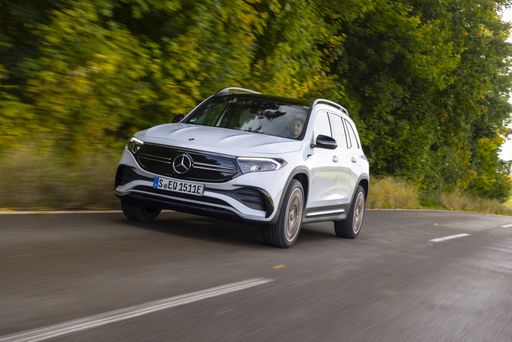 @ Mercedes-Benz Group Media
@ Mercedes-Benz Group Media
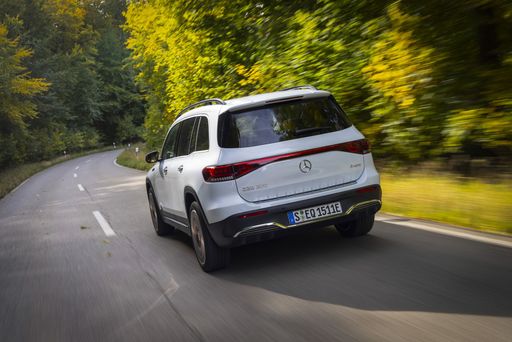 @ Mercedes-Benz Group Media
@ Mercedes-Benz Group Media
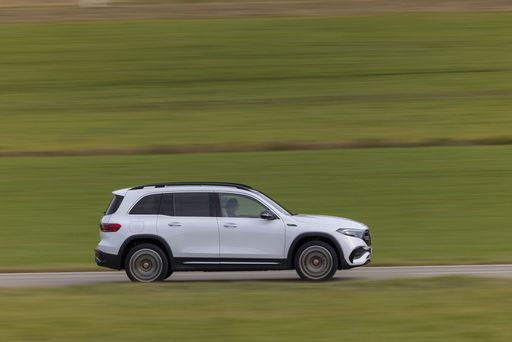 @ Mercedes-Benz Group Media
@ Mercedes-Benz Group Media
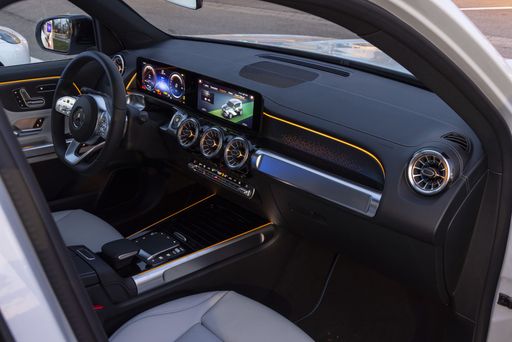 @ Mercedes-Benz Group Media
@ Mercedes-Benz Group Media
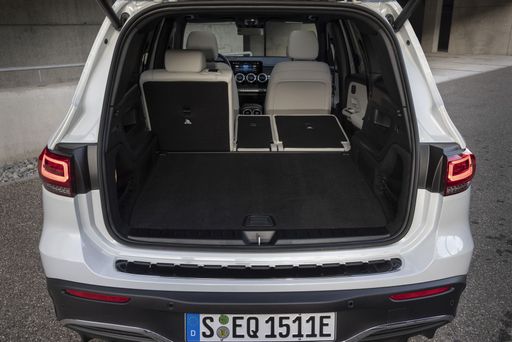 @ Mercedes-Benz Group Media
@ Mercedes-Benz Group Media
Tesla Model Y
The Tesla Model Y blends SUV practicality with sports-car poke, wrapping a roomy, minimalist cabin and handy hatch into a slick, aerodynamic package that feels more Silicon Valley gadget than garage ornament. It’s an ideal pick for buyers who want effortless electric driving, regular software improvements and access to Tesla’s convenient charging network, though style-conscious shoppers should know it’s more about tech and efficiency than classic luxury.
details @ Tesla, Inc.
@ Tesla, Inc.
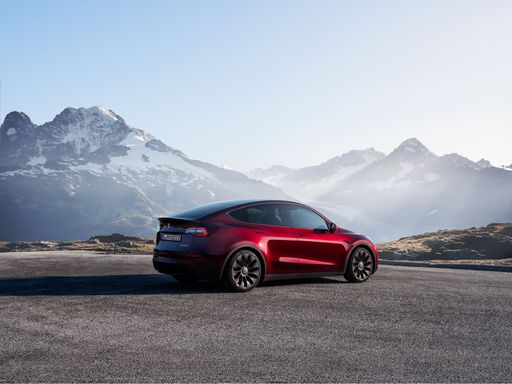 @ Tesla, Inc.
@ Tesla, Inc.
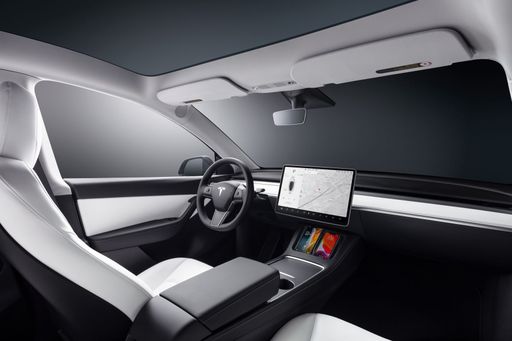 @ Tesla, Inc.
@ Tesla, Inc.
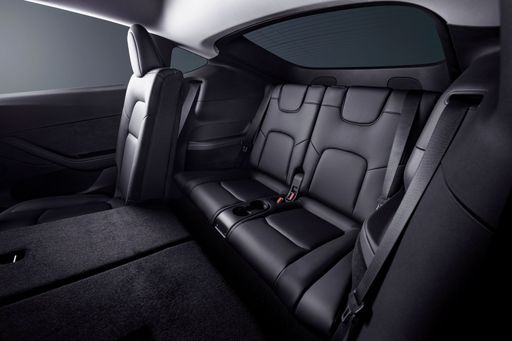 @ Tesla, Inc.
@ Tesla, Inc.
 @ Mercedes-Benz Group Media
@ Mercedes-Benz Group Media
|
 @ Tesla, Inc.
@ Tesla, Inc.
|
|
|
|
Costs and Consumption |
|
|---|---|
|
Price
45900 - 58900 £
|
Price
34300 - 53100 £
|
|
Consumption L/100km
-
|
Consumption L/100km
-
|
|
Consumption kWh/100km
15.2 - 17.2 kWh
|
Consumption kWh/100km
13.1 - 16.2 kWh
|
|
Electric Range
468 - 535 km
|
Electric Range
534 - 622 km
|
|
Battery Capacity
70.50 kWh
|
Battery Capacity
64.5 - 85 kWh
|
|
co2
0 g/km
|
co2
0 g/km
|
|
Fuel tank capacity
-
|
Fuel tank capacity
-
|
Dimensions and Body |
|
|---|---|
|
Body Type
SUV
|
Body Type
SUV
|
|
Seats
5
|
Seats
5
|
|
Doors
5
|
Doors
5
|
|
Curb weight
2105 - 2170 kg
|
Curb weight
1976 - 2108 kg
|
|
Trunk capacity
495 L
|
Trunk capacity
822 L
|
|
Length
4684 mm
|
Length
4790 - 4797 mm
|
|
Width
1834 mm
|
Width
1921 mm
|
|
Height
1654 - 1689 mm
|
Height
1611 - 1624 mm
|
|
Max trunk capacity
1710 L
|
Max trunk capacity
2022 - 2138 L
|
|
Payload
435 kg
|
Payload
440 - 472 kg
|
Engine and Performance |
|
|---|---|
|
Engine Type
Electric
|
Engine Type
Electric
|
|
Transmission
Automatic
|
Transmission
Automatic
|
|
Transmission Detail
Reduction Gearbox
|
Transmission Detail
Reduction Gearbox
|
|
Drive Type
Front-Wheel Drive, All-Wheel Drive
|
Drive Type
All-Wheel Drive, Rear-Wheel Drive
|
|
Power HP
190 - 292 HP
|
Power HP
299 - 627 HP
|
|
Acceleration 0-100km/h
6.2 - 8.9 s
|
Acceleration 0-100km/h
3.5 - 7.2 s
|
|
Max Speed
160 km/h
|
Max Speed
201 - 250 km/h
|
|
Torque
385 - 520 Nm
|
Torque
420 - 493 Nm
|
|
Number of Cylinders
-
|
Number of Cylinders
-
|
|
Power kW
140 - 215 kW
|
Power kW
220 - 461 kW
|
|
Engine capacity
-
|
Engine capacity
-
|
General |
|
|---|---|
|
Model Year
2024 - 2025
|
Model Year
2025
|
|
CO2 Efficiency Class
A
|
CO2 Efficiency Class
A
|
|
Brand
Mercedes-Benz
|
Brand
Tesla
|
What drive types are available for the Mercedes EQB?
The Mercedes EQB is available as Front-Wheel Drive or All-Wheel Drive.
The prices and data displayed are estimates based on German list prices and may vary by country. This information is not legally binding.
